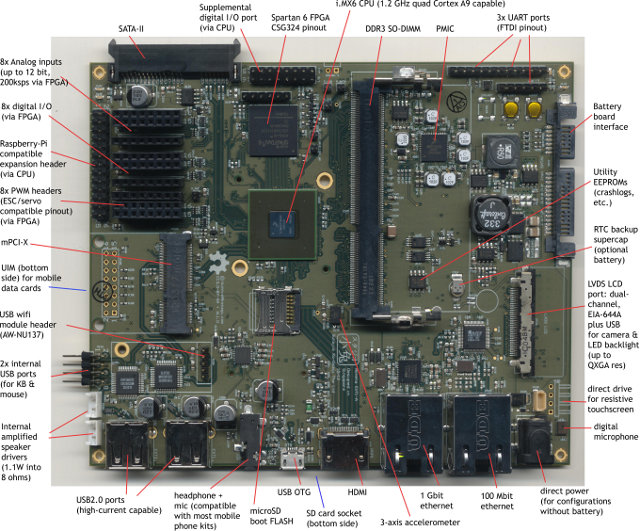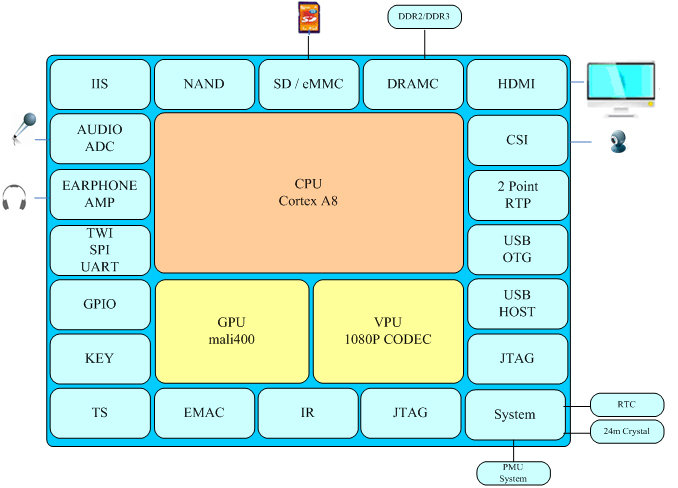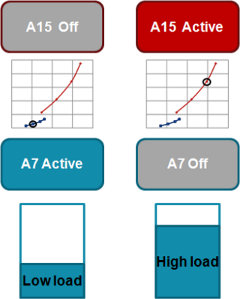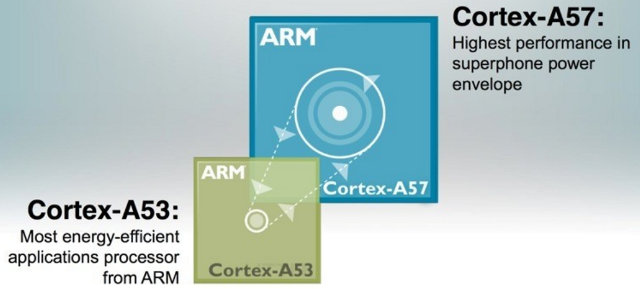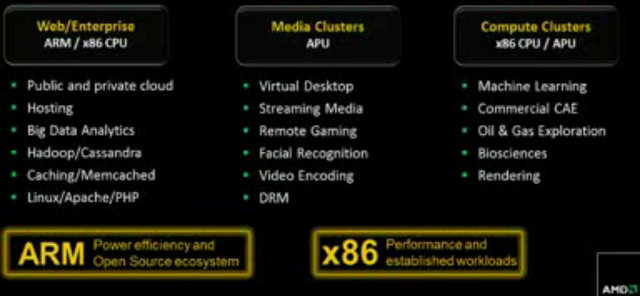Andrew Huang (“Bunnie”) and others have been working on an open source laptop based on Freescale i.MX6 Quad processor since June, and they’ve recently got the motherboard. Beside featuring a powerful quad core ARM processor, the design files are also provided, so if you have the right skills and resources you can build it yourself. The open source laptop mainboard (Codename: Novena) has the following specifications: SoC – Freescale iMX6 Quad @ 1.2GHz with Vivante GC2000 GPU System Memory – 64-bit DDR3-1066 SO-DIMM, upgradable to 4GB Storage – microSD boot flash, SATA-II connector for hard drive / SSD, SD card reader and serial EEPROM (for storing crash logs and other bits of handy data). FPGA – Spartan-6 CSG324. It has several interfaces to the CPU, including a 2Gbit/s RAM-like bus. Internal ports & sensors: mini PCI-express slot UIM slot for mPCIx mobile data cards Dual-channel LVDS LCD connector (up to […]
Linux 3.7 Release
Linus Torvalds has announced the release of Linux Kernel 3.7: Whee. After an extra rc release, 3.7 is now out. After a few more trials at fixing things, in the end we ended up reverting the kswapd changes that caused problems. And with the extra rc, I had decided to risk doing the buffer.c cleanups that would otherwise have just been marked for stable during the next merge window, and had enough time to fix a few problems that people found there too. There’s also a fix for a SCSI driver bug that was exposed by the last-minute workqueue fixes in rc8. Other than that, there’s a few networking fixes, and some trivial fixes for sparc and MIPS. Anyway, it’s been a somewhat drawn out release despite the 3.7 merge window having otherwise appeared pretty straightforward, and none of the rc’s were all that big either. But we’re done, and […]
AllWinner A10s Processor Overview
Between the AllWinner A10 and AllWinner A13 processors, there’s now an alternative. AllWinner A10s is based on AllWinner A13 architecture (sun5i), but adds HDMI and Ethernet MAC which makes it suitable for mini PCs and set-top boxes. The first time I heard about this processor was in August with IP878 mini PC, and in October, one reader (Alex) informed me AllWinner had posted more details about his new processor. Here are the key features of this (relatively) new SoC: CPU/GPU – ARM Cortex-A8 Core with 32KB D-Cache/ 32KB I-Cache / 256KB L2 Cache, and Mali-400 VPU HD Video Decoding 1080p@30fps of VP8/6, H.264/H.263, WMV9/VC-1, WMV7/8, MPEG-4/2/1, Xvid codecs HD Video Encoding 1080p@30fps with H.264 codec Video Out – HDMI 1.4 (1080p), Memory Up to 1GB DDR2/DDR3 up to 533MHz (16/32 bits Data Bus) MLC/TLC/SLC/EF-NAND ECC 64-bit Peripherals: USB2.0 OTG, USB2.0 HOST (OHCI/EHCI) SD Card V.3.0, eMMC V.4.2 SPI, TWI and […]
Big.LITTLE Processing Implementations and Current Status
There was a big,LITTLE mini-summit during Linaro Connect Europe 2012, where an update was given on current big.LITTLE implementations and the results of measurement of power vs performance. Big.LITTLE Processing Implementations Overview As briefly mentioned in “Versatile Express TC2 (2xA15, 3xA7) Development Board at ARM Techcon 2012“, there are 2 big.LITTLE implementations: In-kernel switcher (IKS) This implementation is already available through Linaro and only required minimal changed to the kernel as it mainly an augmentation to DVFS (Dynamic Voltage and Frequency Scaling) except instead of only adjusting voltage and frequency depending on the load, it will also move the load to different cores. The main drawback is that this implementation only uses half the cores. For example, on a 2x Cortex A15 / 2x Cortex A7 system, it can only use 2 cores at the same time (either A15 or A7 cores), as the load is managed between one type […]
openSUSE 12.2 for ARM is Now Available for Beagleboard, Pandaboard, Efixa MX and More
The first stable release of openSUSE for ARM has just been announced. openSUSE 12.2 for ARM is officially available for the Beagleboard, Beagleboard xM, Pandaboard, Pandaboard ES, Versatile Express (QEMU) and the rootfs can be mounted with chroot, but “best effort’ ports have been made for Calxeda Highbank server, i.MX53 Loco development board, CuBox computer, Origen Board and Efika MX smart top. Work is also apparently being done on a Raspberry Pi port which should be available for the next release. openSUSE developers explains that almost all of openSUSE builds runs on these platforms (about 5000 packages). Visit “OpenSUSE on your ARM board” for download links and instructions for a specific ARM board. More details are available on the wiki page. openSUSE has limited resources for ARM development, so If you’d like to help with development (e.g. fixing builds), visit ARM distribution howto page to find out how to get […]
Versatile Express TC2 (2xA15, 3xA7) Development Board at ARM Techcon 2012
If you’ve been following Linaro work, you may have read they develop big.LITTLE processing on TC2, a Test Chip based on 2 Cortex A15 cores and 3 Cortex A7 cores. Charbax is at ARM Techcon 2012 and he shot an interesting video showing 2 Versatile Express development boards based on TC2 demonstrate different big.LITTLE processing schedule strategies: The first scheduling strategy switches between Cortex A15 and Cortex A7 depending on the load required. The second scheduling strategy makes use of 5 cores at the same time and runs high load tasks on the Cortex A15 cores whereas simpler tasks are run on Cortex A7 core. This is only available on Android and Linux and the moment. TC2 is an actual silicon (not FPGA), and as they opened the casing of the development kit (Around 5:00 in the video), you’ll see a fan to cool down the SoC as it is […]
ARM Unveils its First 64-bit Cores: ARM Cortex A53 (LITTLE) and Cortex A57 (big)
ARM Techcon 2012 started yesterday with a major announcement, as ARM unveiled the ARM Cortex A50 series, the first 64-bit ARM Core based on ARMv8 architecture. The company announced 2 cores that can be used independently or in combination to take advantage of big.LITTLE processing: Cortex-A57 – 64-bit core that offers 3x the performance of 2012 superphone in 32-bit, 5x power-efficiency and is scalable beyond 16 cores. It’s the big core in big.LITTLE. Cortex-A53 – 64-bit core that offers the same performance as Cortex A9 but with 4x power efficiency and 25% the size of today CPUs. It’s the LITTLE core in big.LITTLE. Those cores manufactured using 28nm, 20nm and eventually 14nm process technology will be used in smartphones, tablets. mobile computers and servers (See AMD/ARM announcement). They’ll be software compatible with ARMv7-A processors (Aarch32) which should greatly facilitate the transition and support both 64-bit and 32-bit OS and applications, […]
AMD To Provide 64-Bit ARM Opteron Processors for the Server Market
AMD announced it will design processors based on 64-bit ARM technology in addition to its x86 processors for the cloud and data center servers. AMD will be the first company to provide both x86 and ARM solutions to the server market, and the first ARM-based server CPU is scheduled for 2014. There aren’t much details at this time, but AMD did say it will be take advantage of AMD SeaMicro Freedom supercompute fabric in order to link CPU, Ethernet and Storage and the processor will be sold as an AMD Opteron CPU. Interestingly, the company does not plan to design 64-bit ARM processor for the client market (e.g. Windows RT) for the time being. Red Hat and AMD partnered for the server software, and Red Hat has started to work to bring support for the next generation of 64-bit ARM server processors to the Fedora Project include 64-bit ARM OpenJDK. […]


